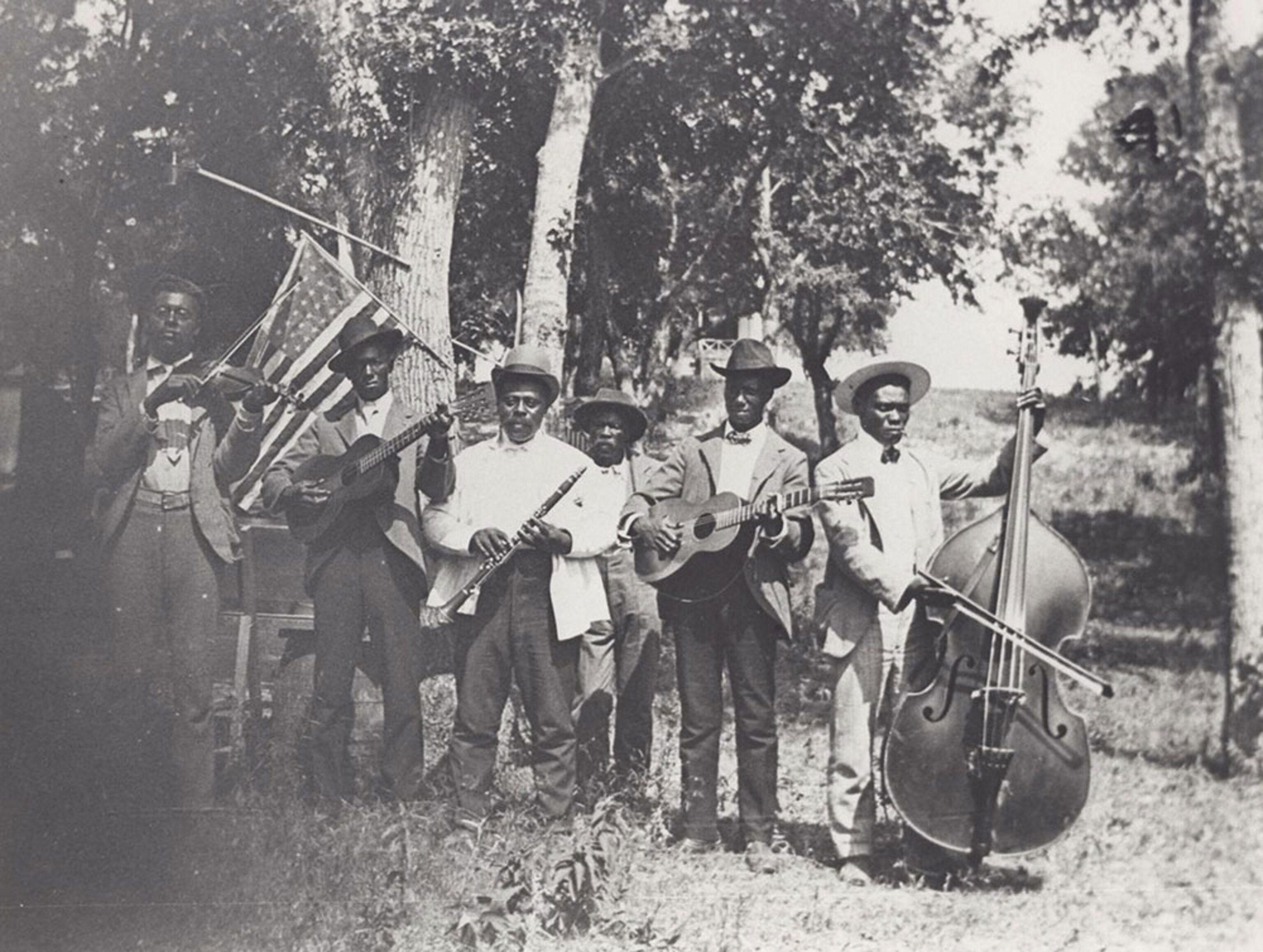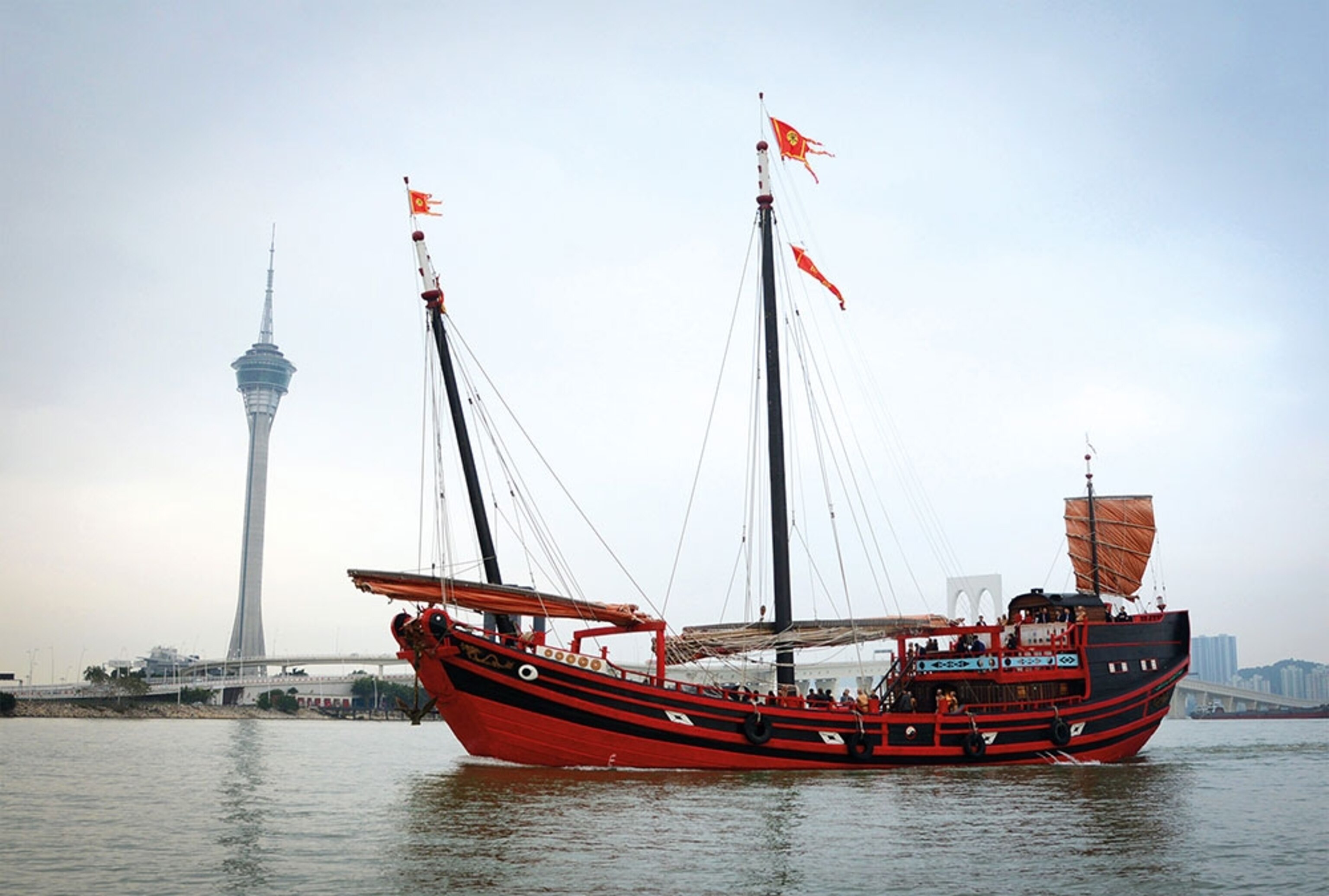
'Juneteenth is more than a celebration'
In today’s newsletter, we mark ‘a first taste of freedom,’ check preparations for a 200 mph hurricane, find the world’s biggest freshwater fish, discover a legendary 17th-century shipwreck … and uncover new approaches to aid breastfeeding.
Call it a first taste of freedom. For enslaved people in Texas hearing that they were emancipated after the Civil War, that’s what Juneteenth, celebrated today as a federal holiday, symbolizes.
Black Americans have paused for this moment of joy every June since the late 1800s, but since the summer of 2020 there’s been an uptick in commemorations nationwide.
America’s newest federal holiday has long meant picnics, parades, and prayer, but it also symbolizes a long history of barriers and struggles. (Pictured above, musicians stand before the U.S. flag at a commemoration 35 years after the Civil War.) “Juneteenth is more than a celebration,” Patricia S. Daniels writes for Nat Geo. “It is a signpost to mark 400 years of history that needs to be uncovered, remembered, and accounted for.”
Read the full story here.
Freedom Day: The Denver Dancing Diamonds (pictured above) perform at a Juneteenth parade in 2015. Juneteenth, also known as Freedom Day, commemorates the end of slavery in the U.S.
Please support our storytelling by subscribing to our magazine and unlimited digital offerings.
STORIES WE’RE FOLLOWING
• Stingray sets record for world's largest freshwater fish
• Many women struggle to breastfeed. Scientists are asking why
• For this Somali refugee, beauty has a purpose
• Discovered: The wrecked Spanish galleon that inspired ‘The Goonies’
• 50 years ago this week: How a law guaranteeing gender equality in schools came to be
IN THE SPOTLIGHT
Go fly a kite: Photographer Gabriele Cecconi, in Kuwait on a project on supreme climate and wealth, caught the emirate’s annual desert kite festival. The extravagant festival is part of celebrations marking Kuwait’s full independence from the United Kingdom in 1961. See Cecconi’s portrait of a land.
PHOTO OF THE DAY
Hop, skip, jump: A young group enjoys a game of double-Dutch rope in Washington, D.C. This image, recently resurfaced in our archival Photo of the Day collection, appeared in a 1983 Nat Geo issue about the daily life and culture of the nation’s capital.
IN A FEW WORDS
Sometimes people think it might be a bit harmless: ‘Oh, I’ll just steal one artifact off this wreck, no one’s going to notice.’ But the bottom line is it really degrades the integrity of the site, and it’s illegal, and it’s just really bad.Lisa Briggs, Underwater archaeologist, Nat Geo Explorer, From: How do we find shipwrecks—and who owns them?
LAST GLIMPSE
Medieval ambitions: An intact ship sunken for more than eight centuries offers clues to ancient Chinese territorial ambitions. It belonged to a southern dynasty that was opening up maritime trade routes because it was blocked along the traditional Silk Roak overland routes. Its discovery in 1987 (it was raised two decades later) came as China again pursued an expansionist course, Nat Geo History magazine reports. (Pictured above, a replica of the Nanhai No. 1 in Macao.)




